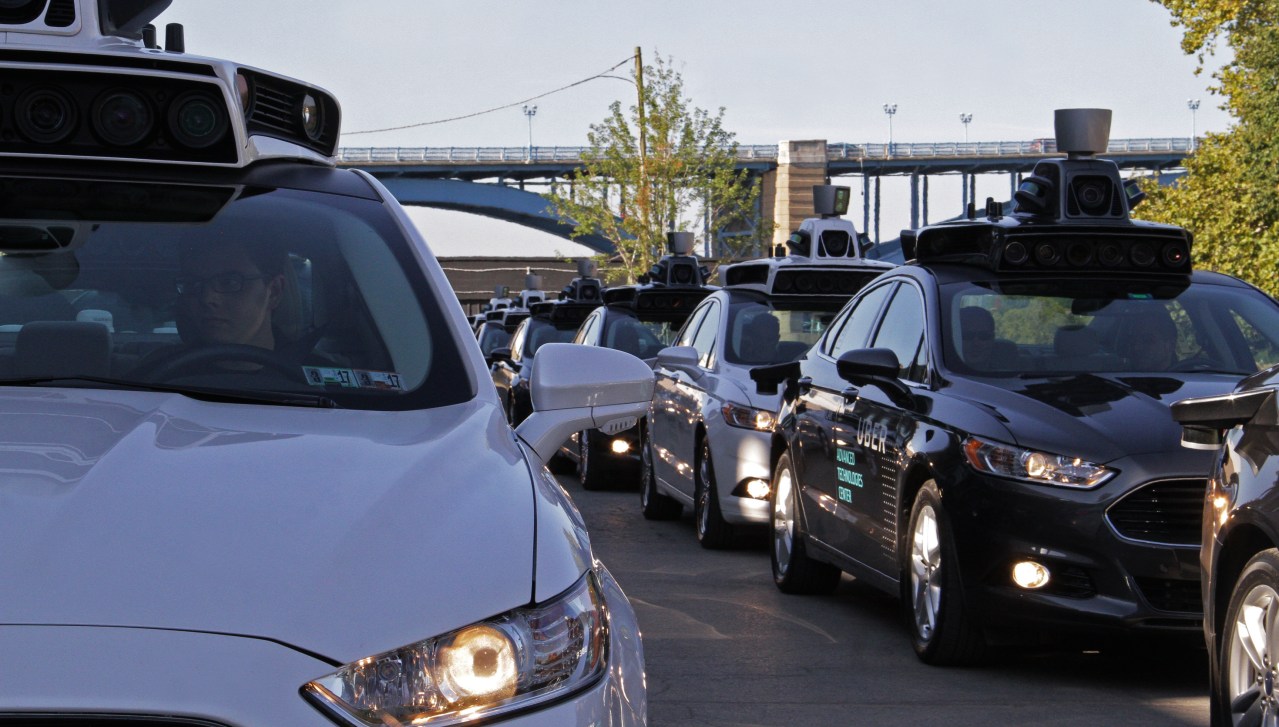
The announcement comes a year-and-a-half after Uber hired dozens of researchers from Carnegie Mellon University’s robotics center to develop the technology.
Uber gave a few members of the press a sneak peek Tuesday when a fleet of 14 Ford Fusions equipped with radar, cameras and other sensing equipment pulled up to Uber’s Advanced Technologies Campus (ATC) northeast of downtown Pittsburgh.
During my 45-minute ride across the city, it became clear that this is not a bid at launching the first fully formed autonomous cars. Instead, this is a research exercise. Uber wants to learn and refine how self driving cars act in the real world. That includes how the cars react to passengers — and how passengers react to them.
“How do drivers in cars next to us react to us? How do passengers who get into the backseat who are experiencing our hardware and software fully experience it for the first time, and what does that really mean?” said Raffi Krikorian, director of Uber ATC.
If they are anything like me, they will respond with fascination followed by boredom.
Source
Comments
Post a Comment